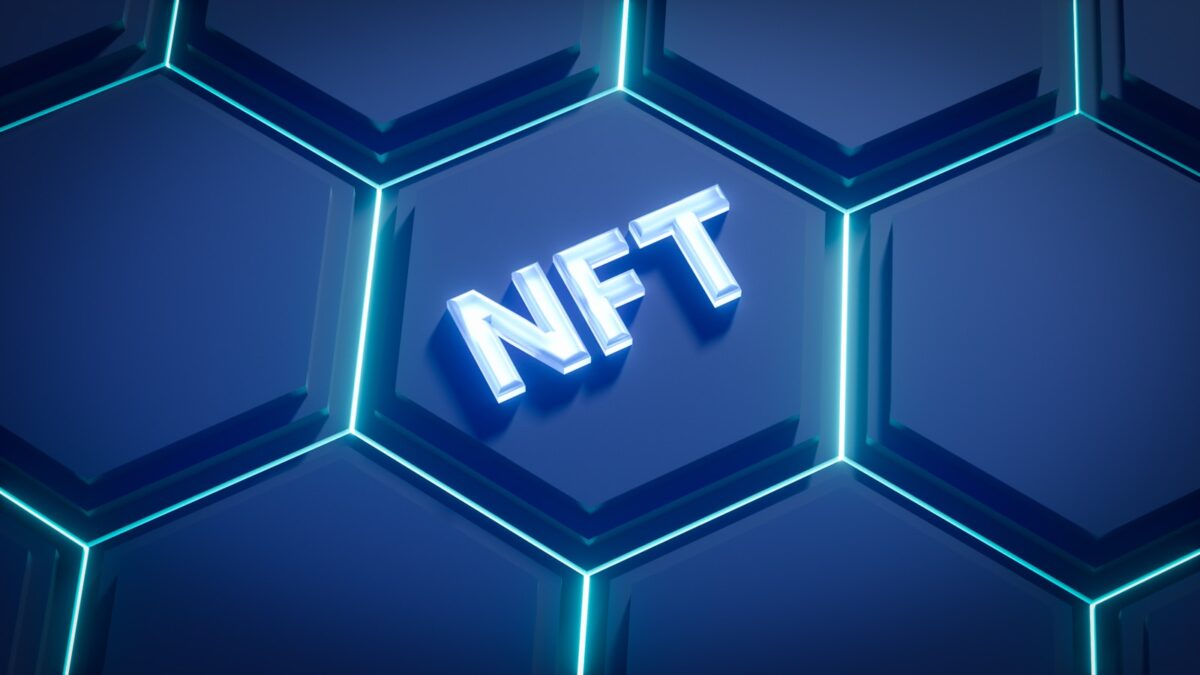
Cryptocurrency sandwich attacks

Mitigation against sandwich manipulations on decentralized exchanges (DEXs) requires prioritizing transaction ordering and implementing robust protection mechanisms. These exploits leverage the ability to insert transactions both before (front-running) and after (back-running) a victim’s trade, capturing value through Miner Extractable Value (MEV). By carefully observing pending transactions, adversaries can position their trades to manipulate prices, profiting at the expense of unsuspecting users.
Effective defenses involve reducing predictability in transaction sequencing and increasing transparency around ordering policies within DEX protocols. Techniques such as randomized batch auctions and commit-reveal schemes aim to disrupt front- and back-running vectors by obscuring transaction timing or grouping multiple trades into atomic executions. Evaluating these approaches experimentally reveals significant decreases in MEV extraction opportunities while maintaining throughput.
Investigations into MEV-aware transaction relays demonstrate that integrating cryptographic proofs for ordering integrity further restricts exploit feasibility. Users can also adopt slippage limits and gas price adjustments to reduce vulnerability. Continuous monitoring of mempool behaviors combined with adaptive fee strategies enhances resilience against value capture through sandwich-like interventions.
Cryptocurrency Sandwich Attacks
To mitigate losses caused by transaction manipulation, users and developers must understand the mechanisms behind sandwich strategies. These exploits rely on precise ordering of blockchain transactions to capitalize on price slippage during decentralized exchange trades. By inserting their own transactions immediately before and after a victim’s swap, attackers extract maximum profit through arbitrage facilitated by front-running and back-running techniques.
The core principle involves exploiting Miner Extractable Value (MEV), where miners or bots reorder transactions within a block to prioritize lucrative sequences. Attackers detect pending large swaps in the mempool, then place buy orders just ahead (front-run) and sell orders immediately following (back-run) those transactions. This sandwiching inflates token prices temporarily, allowing the attacker to sell at an artificially increased rate while the victim suffers adverse slippage effects.
Mechanics of Transaction Ordering and Exploit Execution
Understanding how network participants handle transaction sequencing is crucial for grasping these exploitations. When a user submits a trade order, it enters the mempool awaiting confirmation. Malicious actors monitor this pool for sizable transactions with predictable market impact. They subsequently submit their own orders with higher gas fees to incentivize miners to include them earlier in the block, effectively front-running the victim’s transaction.
After the target swap executes at elevated prices caused by this artificial demand surge, attackers immediately submit sell orders – back-running – capturing profits from the temporary price increase. This process requires precise timing and knowledge of fee dynamics to ensure their transactions are included directly before and after the victim’s, maximizing extraction of MEV without alerting less sophisticated observers.
Examples and Empirical Observations
One notable case involved automated bots targeting large Uniswap trades during periods of high volatility. Studies have shown that up to 80% of frontrunning-related MEV profits derive from such sandwich-style operations in decentralized exchanges using automated market makers (AMMs). The profitability depends heavily on liquidity depth, gas price fluctuations, and token volatility–parameters that can be experimentally adjusted in testnets to observe attack success rates under varying conditions.
Additionally, research highlights that these practices distort fair price discovery by artificially inflating spreads around significant swaps. Onchain data analysis reveals distinct patterns: spikes in transaction fees correlated with rapid successive trades surrounding a single large order often indicate sandwich exploitation. These insights enable developing heuristic algorithms for real-time detection and mitigation strategies aimed at safeguarding traders’ interests.
Protection Strategies Against Manipulative Ordering
Mitigation approaches focus on obscuring transaction details or minimizing exploitable windows within blocks. Techniques such as using private transaction relays or incorporating time-weighted average pricing reduce vulnerability by limiting visibility or smoothing out price impacts over longer intervals. Another effective method involves implementing slippage tolerance settings carefully calibrated to balance trade execution certainty against exposure risk.
Emerging solutions propose protocol-level defenses like encrypted mempools or batch auctions that prevent external actors from observing pending trades prior to final ordering decisions. Furthermore, dynamic fee models discourage excessive priority gas bidding, reducing incentives for front-running attempts. Users can also adopt wallets integrated with MEV protection features leveraging predictive analytics to automatically adjust submission parameters based on current network conditions.
Encouraging Experimental Exploration
For practitioners interested in deeper investigation, replicating these scenarios in controlled environments offers valuable insights into transactional behavior under adversarial conditions. Setting up local nodes with simulated mempool monitoring enables experimentation with different attack vectors and defense configurations–facilitating hands-on understanding of complex interactions among ordering policies, miner incentives, and bot algorithms.
This experimental approach promotes critical thinking about how seemingly abstract blockchain rules translate into tangible economic consequences for participants. It challenges researchers to formulate hypotheses about optimal protection mechanisms while validating them through iterative testing–a scientific method fostering innovation toward more resilient decentralized systems capable of resisting exploitative transaction sequencing tactics.
How Sandwich Attacks Work
To understand the mechanics behind sandwich exploits, it is essential to first examine transaction ordering within decentralized exchanges. These exploits rely on the ability to manipulate the sequence of transactions in a block by inserting two strategically placed orders: one executed immediately before (front-running) and another directly after (back-running) a victim’s trade. This technique leverages Miner Extractable Value (MEV), enabling malicious actors to capture profit by influencing price slippage during token swaps.
The core principle involves detecting a pending transaction with significant market impact and then placing an order that benefits from the subsequent price movement caused by that transaction. The attacker’s initial transaction increases the price, followed by the victim’s swap at this inflated rate, and finally, the attacker’s back-running order sells at a profit generated from this artificial price shift. This sequential ordering creates a “sandwich” effect around the target trade.
Technical Process of Front-Running and Back-Running
Front-running consists of submitting a buy order with higher gas fees so that miners prioritize it ahead of the victim’s transaction. By doing so, the attacker pushes up asset prices prior to the victim’s trade execution. Immediately after the victim’s order fills at this inflated price, back-running follows with a sell order to capitalize on the elevated market level. This requires precise timing and knowledge of mempool contents where unconfirmed transactions reside.
Network congestion and gas fee bidding wars play crucial roles in successfully achieving preferred transaction placement. Sophisticated bots continuously monitor pending transactions for lucrative opportunities and dynamically adjust their gas fees to maintain priority in block inclusion. The interplay between front-running and back-running orders is critical to extracting maximum MEV while minimizing exposure to slippage or failed trades.
Examples from Decentralized Exchanges
An illustrative case occurred on Uniswap V2 where attackers exploited high-volume trades by rapidly inserting purchase orders just before large liquidity swaps, inflating token prices temporarily. Following these swaps, immediate sales captured arbitrage profits resulting from transient market imbalances. Similar patterns have been observed on SushiSwap and PancakeSwap, where automated systems exploit predictable transaction flows through MEV extraction algorithms.
In some instances, attackers use multi-step strategies involving flashbots–private communication channels with miners–to bypass public mempool detection and ensure exclusive access to profitable ordering sequences. Such techniques reduce competition but increase sophistication requirements for executing successful operations without detection or mitigation.
Protection Mechanisms Against Transaction Ordering Exploits
Countermeasures against these manipulations include implementing protocols like Fair Ordering Services or utilizing commit-reveal schemes that obscure transaction details until inclusion in blocks. Additionally, decentralized finance platforms increasingly incorporate slippage tolerance limits and dynamic fee adjustments to reduce vulnerability windows for front-running scenarios.
Emerging solutions also focus on redesigning mempool architectures or deploying threshold encryption methods that prevent adversaries from inspecting pending transactions prematurely. Collaborative efforts between protocol developers and miner operators aim to establish equitable transaction sequencing policies limiting MEV-related distortions while maintaining network efficiency.
MEV Research and Future Directions
The study of Miner Extractable Value continues revealing complex interactions between economic incentives and technical limitations inherent in blockchain consensus mechanisms. Experimental frameworks analyze how varying block sizes, latency constraints, or alternative consensus algorithms influence susceptibility to transactional reorderings facilitating profit extraction schemes.
Ongoing research encourages exploration into incentive-compatible protocols minimizing exploitability without sacrificing throughput or decentralization quality. Practical investigations combining simulation environments with live testnets provide valuable insights into balancing security enhancements against real-world performance metrics under diverse network conditions.
Detecting Vulnerable Transactions
Identifying transactions susceptible to profit extraction through front-running and back-running strategies requires monitoring the transaction ordering mechanisms within decentralized exchanges (DEXs). Transactions with predictable slippage or large swap sizes are prime candidates for manipulation, as miners or bots can insert their operations before and after these trades to capture MEV (Miner Extractable Value). Tools analyzing mempool data in real-time provide insight into pending swaps that exhibit characteristics favorable for such exploitation, enabling proactive protection measures.
Key indicators include unusually high gas fees signaling urgency, token pairs with low liquidity prone to price impact, and repeated patterns of transaction sandwiching observed in specific smart contracts. Examining block composition reveals how sequenced trades contribute to value capture by intermediaries performing back-running orders immediately after victim transactions. Quantitative metrics derived from historical DEX activity enable classification models that flag vulnerable swaps before confirmation.
Methodologies for Detection and Protection
Advanced detection relies on dissecting the ordering of blockchain transactions alongside analyzing MEV opportunities generated by arbitrage between pools. One approach involves simulating potential trade sequences off-chain to estimate possible profit margins attackers might gain through front-running followed by back-running. These simulations help identify transaction parameters that increase exposure, such as slippage tolerance thresholds and timing gaps allowing adversaries to interject their trades effectively.
Protection techniques incorporate transaction batching, randomized execution order, and MEV-aware routing algorithms implemented at the DEX protocol level. By obfuscating order placement or introducing delays, these methods reduce predictability exploited during sandwich-like manipulations. Monitoring tools combined with on-chain anomaly detection frameworks empower users and developers to recognize suspicious ordering patterns indicative of ongoing exploitation attempts, thus reinforcing ecosystem integrity.
Preventing Sandwich Attack Losses
To mitigate losses caused by transaction manipulation involving front-running and back-running strategies, implementing robust transaction ordering protocols is paramount. Prioritizing fair sequencing methods such as first-in-first-out (FIFO) or adopting commit-reveal schemes can minimize opportunities for profit extraction through MEV (Miner Extractable Value). These mechanisms reduce the likelihood of malicious actors inserting transactions around a victim’s order to capture arbitrage gains.
Another effective protection technique involves leveraging decentralized transaction relays that obscure pending transactions until final inclusion in a block. By encrypting or batching orders off-chain before submission, these systems hinder attackers’ ability to observe and exploit transaction flow. This approach decreases the feasibility of both front-running and back-running maneuvers that sandwich legitimate trades to generate illicit profit.
Advanced Strategies Against Transaction Exploitation
Developers and users can utilize slippage controls embedded within smart contracts to guard against adverse price movements triggered by predatory ordering tactics. Setting strict maximum acceptable slippage parameters forces automatic transaction reversion if manipulated price deviations occur, curtailing potential exploitation windows. Careful calibration of these thresholds balances execution certainty with attack resistance.
Research into MEV-aware block producers reveals promising methods for equitable transaction sequencing that limit extractable value from sandwich-like strategies. Protocols incorporating randomized or encrypted ordering prevent predictable positioning of transactions relative to targeted trades, disrupting attackers’ ability to craft profitable insertion points. Experimental implementations demonstrate measurable reductions in front-running profits without compromising network throughput.
A practical case study involves integrating time-weighted average pricing (TWAP) oracles within decentralized exchanges to smooth out price fluctuations exploited during sandwich operations. By referencing averaged price data over defined intervals rather than instantaneous values, the system diminishes profitability from rapid transaction insertions surrounding a victim’s trade. Early deployments confirm decreased arbitrage incentives aligned with this protective design.
Exploring collaborative defense models where multiple participants share aggregated order data in privacy-preserving environments offers another promising avenue for protection. Such frameworks enhance collective awareness of pending transactions while limiting exposure to individual exploiters attempting back-running or front-running tactics. The synergy between cryptographic commitment and multi-party computation elevates resilience against ordering-based manipulations.
Conclusion
Monitoring tools designed to detect transaction manipulation through front-running and back-running provide indispensable insight into how ordering strategies exploit decentralized exchange (DEX) mechanisms for profit. By precisely tracking the insertion of trades surrounding victim transactions, these systems reveal patterns that disrupt fair execution and reveal exploitable inefficiencies within mempool dynamics.
Protection against such predatory ordering requires continuous refinement of monitoring algorithms capable of identifying nuanced transaction sequences indicative of sandwich-like exploitation. For example, real-time analysis combining gas fee anomalies with trade pair volatility offers a promising avenue to anticipate and mitigate revenue extraction by opportunistic actors.
Key Insights and Future Directions
- Transaction Ordering Transparency: Tools leveraging block reordering data alongside pending transaction pools enhance visibility into how attackers manipulate trade sequencing on DEX platforms. This transparency forms the basis for developing countermeasures that can reorder or delay suspicious transactions.
- Adaptive Detection Models: Machine learning models trained on historical attack signatures enable adaptive recognition of emerging patterns, especially when new tactics evolve to bypass static heuristic filters.
- Integration with Protocol-Level Defenses: Combining monitoring outputs with protocol governance allows dynamic adjustment of trading rules–such as slippage limits or timed batch executions–to reduce vulnerability windows exploited by front-running and back-running techniques.
- User-Centric Alerts and Analytics: Delivering actionable insights directly to traders through dashboards or wallet integrations empowers users to avoid high-risk periods or configure protection parameters aligned with their risk tolerance.
The continued evolution of these analytical instruments has broad implications beyond mere detection: they contribute toward establishing equitable market conditions where transaction sequencing cannot be easily gamed for disproportionate gain. As decentralized finance matures, embedding sophisticated surveillance within DEX infrastructure will be crucial for preserving integrity amid increasingly complex profit-seeking behaviors.
Future research should focus on cross-chain interoperability of monitoring frameworks, enabling holistic scrutiny as sandwich-like manipulations migrate across protocols. Experimenting with cryptographic commitments or time-lock puzzles may also introduce novel barriers against exploitative ordering without compromising throughput or user experience. Such innovations hold promise for transforming adversarial tactics into measurable data points that reinforce systemic resilience rather than undermine it.


